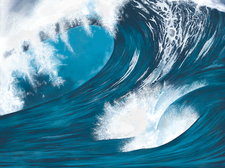Glimpse the future of the Linux desktop with the Wayland-based Hawaii
Catch a Wave

The Hawaii desktop relies on Qt Quick, supports Wayland, and comes with its own compositor. Thanks to the Maui Linux system, you can test Hawaii on a Live CD or on a VMware virtual machine.
The Linux classic desktop systems have been around for several years now. KDE and Gnome are each built around a native toolkit (Qt and Gtk+, respectively). Many of the other desktops are spinoffs of either KDE and Gnome, and the ones that aren't spinoffs are built with many of the same background tools. Slowly, however, a new generation of graphics tools and components is entering the scene. A pair of promising new tools include:
- Wayland [1] – a protocol for graphics interfaces intended to serve as a replacement for the venerable X display protocol used with traditional Unix/Linux graphics systems.
- Qt Quick [2] – an application framework that is used for fast development of custom user interfaces based around Qt.
A new desktop system takes a long time to build, so it takes a while for these new ingredients to actually get baked into something. The Maui project [3] began as an effort to build a complete Linux system around new tools like Wayland, Qt Quick, and the systemd startup daemon. At the heart of Maui is the Hawaii desktop [4] – a simple and (so far) experimental desktop system that runs on Maui and a few other Linux alternatives. Hawaii is still in the alpha stage, but you can try it for yourself using an Arch Linux package, a Live boot DVD, or a VMware virtual machine.
[...]
Buy this article as PDF
(incl. VAT)
